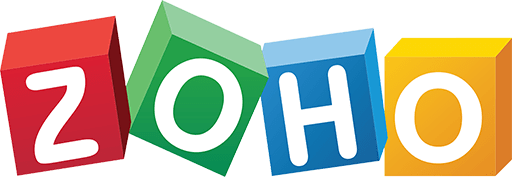In your small business you may use invoices and receipts, and both are key to making money in your business, But there are key differences between the two documents, and they have different purposes.
Invoices are documents you use to get paid while receipts are documents you issue when you have been paid.
In other words, a business will issue invoices before it gets paid, and receipts after it has been paid.
Receipts is a term that is sometimes used to describe the revenues of a business. And, of course, if you purchase items for your business you’ll need to keep copies for tax purposes.
Here’s why these terms are important, and how understanding and managing them can help your business get financing.
Invoice vs. Receipt Example
Here’s an example of invoices vs receipts. George owns a handyman business. He invoices a customer requesting payment. When the customer pays the invoice, he provides a receipt noting how much was paid.
The invoice describes for the customer the goods and services George’s business has provided, and the receipt confirms the goods or services the customer has paid for.
Compare Accounting Solutions
An accounting software or service can help you avoid costly mistakes and get a clear picture of your overall finances. Use Nav to find the right accounting solution for your business.
Can You Use Invoice and Receipt Interchangeably?
You shouldn’t use the terms invoice and receipt interchangeably even though under some circumstances they can prove similar points. An invoice provides details about services or goods provided with a request for payment, while a receipt provides proof of purchase for goods or services provided.
If there is a dispute about when an order was placed or what services were provided, an invoice or a receipt could be helpful in settling the dispute. In this case these documents may, to a degree, be used interchangeably. But if you have a dispute over whether payment was or wasn’t made, a receipt is the better document to have.
That said, some types of transactions are largely receipt based. For example, when you sell food to a customer in your restaurant you provide a sales slip or sales receipt (the check) that serves as the invoice. The customer then “approves” it by making a payment with cash, a credit card, or debit card. They get a receipt for that payment.
Why Potential Financing Makes Tracking Business Receipts And Invoices Important
Some types of small business loans and financing require revenues in order to qualify, and in some cases invoices or receipts can be helpful.
Invoice financing in particular is a type of financing where the business is advanced funds on outstanding invoices. It may also be described as “accounts receivable financing or A/R financing.” This short-term financing can provide working capital and improve cash flow for the business.
As mentioned earlier, receipts may be used as shorthand for the revenue a business has received. Some lenders and financing sources will extend financing based on business revenues. Business bank statements are often required to verify those revenues.
Both of these types of financing may be more flexible than traditional small business loans in terms of credit requirements (personal or business credit). When applying for invoice financing, in particular, the lender may be more interested in the creditworthiness of the client who owes the invoice, since they will be the ones to pay it.
Compare your financing options with confidence
Know what business financing you can qualify for before you apply — instantly compare your best financial options based on your unique business data.
Best Software Tools For Generating & Tracking Invoices And Receipts
While small business owners can manually create invoices either by paper or online using word processing tools like Word or Google Docs, those methods are the least efficient and most unreliable. (There are numerous free invoice templates available online.)
However, key information from those documents will still need to be entered into your accounting software for bookkeeping and tax purposes, so you may as well choose accounting software with invoicing built in.
Compare Accounting Solutions
An accounting software or service can help you avoid costly mistakes and get a clear picture of your overall finances. Use Nav to find the right accounting solution for your business.
Accounting Software for Invoicing & Receipts
Invoice generator tools integrated with your accounting software will allow you to create online invoices, track and receive payments and follow up on slow or unpaid invoices. You can also create sales receipts for customers or clients. (Note that if you make e-commerce or retail sales, you will likely need a merchant account with a point of sale system to generate customer receipts.)
Here are some of the best accounting software programs that include invoicing and allow you to create sales receipts:
#1 Accounting Software for Small Business
Intuit QuickBooks
Simplify your accounting with QuickBooks Online. Easily track income, expenses, and more with accounting software designed for all kinds of businesses. Save up to 50% on QuickBooks Online now!
Pricing
Starts at $30/month
Discounts
50% off for 3 months
Free Trial
Free trial for 30 days
Key Features
- Reporting
- Manage receipts, cash flow, and taxes
- Invoicing
- Track inventory
Great for Business Workflows
Zoho Books
Zoho Books is online accounting software that helps you manage your finances while automating business workflows. They offer a free version that allows you to connect your accountant and manage basic accounting. Paid versions include more services as well as better support.
Pricing
Plans start at $0/month
Discounts
Save more with annual billing
Free Trial
Free 14 Day Trial
Key Features
- Create invoices in seconds
- Create purchase orders & track expenses
- Inventory tracking
Business Bank Accounts with Invoicing
Some business bank accounts also include invoicing features that allow you to invoice and receive payment to your business checking account. This can be another easy way to manage and track invoices and receipts, as well as to get paid.
Here are some of the best business checking accounts that offer invoicing:
Lilli
Popular with freelancers, contractors and small business owners, Lili offers invoicing software that lets you create, send, and organize invoices and accept all payment methods.
Frequently asked questions about Invoices Vs Receipts
What Should An Invoice Include?
A professional invoice will typically include the following details:
Your company information: the business name, address, contact information (such as phone number, website, and/or email address) and (potentially) the your business taxpayer identification number (unless you supply this separately).
Customer information: Customers, name, address and contact details
Transaction details: Invoice number, itemized services or goods with prices, total amount due, payment terms (such as net-30 or due on receipt), due date, return policy (if applicable), and methods of payment available. (For example, credit cards or ACH payments.)
You can see sample invoices, including sales invoices, here.
What Should A Payment Receipt Include?
The format of a payment receipt may vary depending on the type of services or goods sold. However, it will generally include the following information.
Business information (name, address or other contact information for the business), description of goods or services paid for, amount of money paid, date paid, payment method.
Credit and debit card receipts follow an abbreviated format, and your merchant service provider will offer POS software for printing receipts along with guidelines of what should be included.
Build your foundation with Nav Prime
Options for new businesses are often limited. The first years focus on building your profile and progressing.
Get the Main Street Makers newsletter
This article was originally written on October 31, 2023 and updated on May 15, 2025.
Rate this article
This article has not yet been rated

Gerri Detweiler
Education Consultant, Nav
Gerri Detweiler has spent more than 30 years helping people make sense of credit and financing, with a special focus on helping small business owners. As an Education Consultant for Nav, she guides entrepreneurs in building strong business credit and understanding how it can open doors for growth.
Gerri has answered thousands of credit questions online, written or coauthored six books — including Finance Your Own Business: Get on the Financing Fast Track — and has been interviewed in thousands of media stories as a trusted credit expert. Through her widely syndicated articles, webinars for organizations like SCORE and Small Business Development Centers, as well as educational videos, she makes complex financial topics clear and practical, empowering business owners to take control of their credit and grow healthier companies.

.png)
